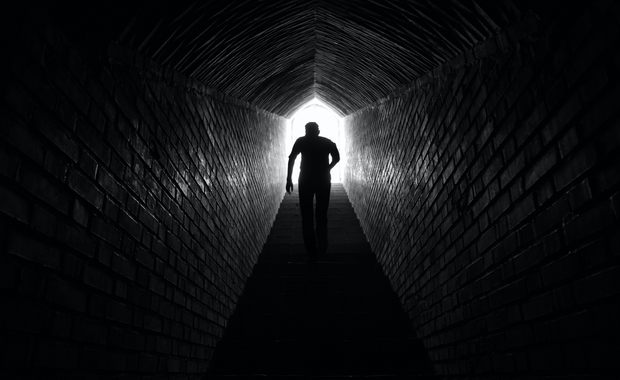Change Your Mindset
50 Famously Successful People Who Failed At First

Not everyone who’s on top today got there with success after success. More often than not, those who history best remembers were faced with numerous obstacles that forced them to work harder and show more determination than others.
Next time you’re feeling down about your failures in college or in a career, keep these fifty famous people in mind and remind yourself that sometimes failure is just the first step towards success.
Successful People Who Failed At First
Business Gurus
These businessmen and the companies they founded are today known around the world, but as these stories show, their beginnings weren’t always smooth.
- Henry Ford: While Ford is today known for his innovative assembly line and American-made cars, he wasn’t an instant success. In fact, his early businesses failed and left him broke five time before he founded the successful Ford Motor Company.
- R. H. Macy: Most people are familiar with this large department store chain, but Macy didn’t always have it easy. Macy started seven failed business before finally hitting big with his store in New York City.
- F. W. Woolworth: Some may not know this name today, but Woolworth was once one of the biggest names in department stores in the U.S. Before starting his own business, young Woolworth worked at a dry goods store and was not allowed to wait on customers because his boss said he lacked the sense needed to do so.
- Soichiro Honda: The billion-dollar business that is Honda began with a series of failures and fortunate turns of luck. Honda was turned down by Toyota Motor Corporation for a job after interviewing for a job as an engineer, leaving him jobless for quite some time. He started making scooters of his own at home, and spurred on by his neighbors, finally started his own business.
- Akio Morita: You may not have heard of Morita but you’ve undoubtedly heard of his company, Sony. Sony’s first product was a rice cooker that unfortunately didn’t cook rice so much as burn it, selling less than 100 units. This first setback didn’t stop Morita and his partners as they pushed forward to create a multi-billion dollar company.
- Bill Gates: Gates didn’t seem like a shoe-in for success after dropping out of Harvard and starting a failed first business with Microsoft co-founder Paul Allen called Traf-O-Data. While this early idea didn’t work, Gates’ later work did, creating the global empire that is Microsoft.
- Harland David Sanders: Perhaps better known as Colonel Sanders of Kentucky Fried Chicken fame, Sanders had a hard time selling his chicken at first. In fact, his famous secret chicken recipe was rejected 1,009 times before a restaurant accepted it.
- Walt Disney: Today Disney rakes in billions from merchandise, movies and theme parks around the world, but Walt Disney himself had a bit of a rough start. He was fired by a newspaper editor because, “he lacked imagination and had no good ideas.” After that, Disney started a number of businesses that didn’t last too long and ended with bankruptcy and failure. He kept plugging along, however, and eventually found a recipe for success that worked.
Scientists and Thinkers
These people are often regarded as some of the greatest minds of our century, but they often had to face great obstacles, the ridicule of their peers and the animosity of society.
- Albert Einstein: Most of us take Einstein’s name as synonymous with genius, but he didn’t always show such promise. Einstein did not speak until he was four and did not read until he was seven, causing his teachers and parents to think he was mentally handicapped, slow and anti-social. Eventually, he was expelled from school and was refused admittance to the Zurich Polytechnic School. It might have taken him a bit longer, but most people would agree that he caught on pretty well in the end, winning the Nobel Prize and changing the face of modern physics.
- Charles Darwin: In his early years, Darwin gave up on having a medical career and was often chastised by his father for being lazy and too dreamy. Darwin himself wrote, “I was considered by all my masters and my father, a very ordinary boy, rather below the common standard of intellect.” Perhaps they judged too soon, as Darwin today is well-known for his scientific studies.
- Robert Goddard: Goddard today is hailed for his research and experimentation with liquid-fueled rockets, but during his lifetime his ideas were often rejected and mocked by his scientific peers who thought they were outrageous and impossible. Today rockets and space travel don’t seem far-fetched at all, due largely in part to the work of this scientist who worked against the feelings of the time.
- Isaac Newton: Newton was undoubtedly a genius when it came to math, but he had some failings early on. He never did particularly well in school and when put in charge of running the family farm, he failed miserably, so poorly in fact that an uncle took charge and sent him off to Cambridge where he finally blossomed into the scholar we know today.
- Socrates: Despite leaving no written records behind, Socrates is regarded as one of the greatest philosophers of the Classical era. Because of his new ideas, in his own time he was called “an immoral corrupter of youth” and was sentenced to death. Socrates didn’t let this stop him and kept right on, teaching up until he was forced to poison himself.
- Robert Sternberg: This big name in psychology received a C in his first college introductory psychology class with his teacher telling him that, “there was already a famous Sternberg in psychology and it was obvious there would not be another.” Sternberg showed him, however, graduating from Stanford with exceptional distinction in psychology, summa cum laude, and Phi Beta Kappa and eventually becoming the President of the American Psychological Association.
Inventors
These inventors changed the face of the modern world, but not without a few failed prototypes along the way.
- Thomas Edison: In his early years, teachers told Edison he was “too stupid to learn anything.” Work was no better, as he was fired from his first two jobs for not being productive enough. Even as an inventor, Edison made 1,000 unsuccessful attempts at inventing the light bulb. Of course, all those unsuccessful attempts finally resulted in the design that worked.
- Orville and Wilbur Wright: These brothers battled depression and family illness before starting the bicycle shop that would lead them to experimenting with flight. After numerous attempts at creating flying machines, several years of hard work, and tons of failed prototypes, the brothers finally created a plane that could get airborne and stay there.
Public Figures
From politicians to talk show hosts, these figures had a few failures before they came out on top.
- Winston Churchill: This Nobel Prize-winning, twice-elected Prime Minster of the United Kingdom wasn’t always as well regarded as he is today. Churchill struggled in school and failed the sixth grade. After school he faced many years of political failures, as he was defeated in every election for public office until he finally became the Prime Minister at the ripe old age of 62.
- Abraham Lincoln: While today he is remembered as one of the greatest leaders of our nation, Lincoln’s life wasn’t so easy. In his youth he went to war a captain and returned a private (if you’re not familiar with military ranks, just know that private is as low as it goes.) Lincoln didn’t stop failing there, however. He started numerous failed business and was defeated in numerous runs he made for public office.
- Oprah Winfrey: Most people know Oprah as one of the most iconic faces on TV as well as one of the richest and most successful women in the world. Oprah faced a hard road to get to that position, however, enduring a rough and often abusive childhood as well as numerous career setbacks including being fired from her job as a television reporter because she was “unfit for tv.”
- Harry S. Truman: This WWI vet, Senator, Vice President and eventual President eventually found success in his life, but not without a few missteps along the way. Truman started a store that sold silk shirts and other clothing–seemingly a success at first–only go bankrupt a few years later.
- Dick Cheney: This recent Vice President and businessman made his way to the White House but managed to flunk out of Yale University, not once, but twice. Former President George W. Bush joked with Cheney about this fact, stating, “So now we know –if you graduate from Yale, you become president. If you drop out, you get to be vice president.”
Hollywood Types
These faces ought to be familiar from the big screen, but these actors, actresses and directors saw their fair share of rejection and failure before they made it big.
- Jerry Seinfeld: Just about everybody knows who Seinfeld is, but the first time the young comedian walked on stage at a comedy club, he looked out at the audience, froze and was eventually jeered and booed off of the stage. Seinfeld knew he could do it, so he went back the next night, completed his set to laughter and applause, and the rest is history.
- Fred Astaire: In his first screen test, the testing director of MGM noted that Astaire, “Can’t act. Can’t sing. Slightly bald. Can dance a little.” Astaire went on to become an incredibly successful actor, singer and dancer and kept that note in his Beverly Hills home to remind him of where he came from.
- Sidney Poitier: After his first audition, Poitier was told by the casting director, “Why don’t you stop wasting people’s time and go out and become a dishwasher or something?” Poitier vowed to show him that he could make it, going on to win an Oscar and become one of the most well-regarded actors in the business.
- Jeanne Moreau: As a young actress just starting out, this French actress was told by a casting director that she was simply not pretty enough to make it in films. He couldn’t have been more wrong as Moreau when on to star in nearly 100 films and win numerous awards for her performances.
- Charlie Chaplin: It’s hard to imagine film without the iconic Charlie Chaplin, but his act was initially rejected by Hollywood studio chiefs because they felt it was a little too nonsensical to ever sell.
- Lucille Ball: During her career, Ball had thirteen Emmy nominations and four wins, also earning the Lifetime Achievement Award from the Kennedy Center Honors. Before starring in I Love Lucy, Ball was widely regarded as a failed actress and a B movie star. Even her drama instructors didn’t feel she could make it, telling her to try another profession. She, of course, proved them all wrong.
- Harrison Ford: In his first film, Ford was told by the movie execs that he simply didn’t have what it takes to be a star. Today, with numerous hits under his belt, iconic portrayals of characters like Han Solo and Indiana Jones, and a career that stretches decades, Ford can proudly show that he does, in fact, have what it takes.
- Marilyn Monroe: While Monroe’s star burned out early, she did have a period of great success in her life. Despite a rough upbringing and being told by modeling agents that she should instead consider being a secretary, Monroe became a pin-up, model and actress that still strikes a chord with people today.
- Oliver Stone: This Oscar-winning filmmaker began his first novel while at Yale, a project that eventually caused him to fail out of school. This would turn out to be a poor decision as the the text was rejected by publishers and was not published until 1998, at which time it was not well-received. After dropping out of school, Stone moved to Vietnam to teach English, later enlisting in the army and fighting in the war, a battle that earning two Purple Hearts and helped him find the inspiration for his later work that often center around war.
Writers and Artists
We’ve all heard about starving artists and struggling writers, but these stories show that sometimes all that work really does pay off with success in the long run.
- Vincent Van Gogh: During his lifetime, Van Gogh sold only one painting, and this was to a friend and only for a very small amount of money. While Van Gogh was never a success during his life, he plugged on with painting, sometimes starving to complete his over 800 known works. Today, they bring in hundreds of millions.
- Emily Dickinson: Recluse and poet Emily Dickinson is a commonly read and loved writer. Yet in her lifetime she was all but ignored, having fewer than a dozen poems published out of her almost 1,800 completed works.
- Theodor Seuss Giesel: Today nearly every child has read The Cat in the Hat or Green Eggs and Ham, yet 27 different publishers rejected Dr. Seuss’s first book To Think That I Saw It on Mulberry Street.
- Charles Schultz: Schultz’s Peanuts comic strip has had enduring fame, yet this cartoonist had every cartoon he submitted rejected by his high school yearbook staff. Even after high school, Schultz didn’t have it easy, applying and being rejected for a position working with Walt Disney.
- Steven Spielberg: While today Spielberg’s name is synonymous with big budget, he was rejected from the University of Southern California School of Theater, Film and Television three times. He eventually attended school at another location, only to drop out to become a director before finishing. Thirty-five years after starting his degree, Spielberg returned to school in 2002 to finally complete his work and earn his BA.
- Stephen King: The first book by this author, the iconic thriller Carrie, received 30 rejections, finally causing King to give up and throw it in the trash. His wife fished it out and encouraged him to resubmit it, and the rest is history, with King now having hundreds of books published the distinction of being one of the best-selling authors of all time.
- Zane Grey: Incredibly popular in the early 20th century, this adventure book writer began his career as a dentist, something he quickly began to hate. So, he began to write, only to see rejection after rejection for his works, being told eventually that he had no business being a writer and should given up. It took him years, but at 40, Zane finally got his first work published, leaving him with almost 90 books to his name and selling over 50 million copies worldwide.
- J. K. Rowling: Rowling may be rolling in a lot of Harry Potter dough today, but before she published the series of novels she was nearly penniless, severely depressed, divorced, trying to raise a child on her own while attending school and writing a novel. Rowling went from depending on welfare to survive to being one of the richest women in the world in a span of only five years through her hard work and determination.
- Monet: Today Monet’s work sells for millions of dollars and hangs in some of the most prestigious institutions in the world. Yet during his own time, it was mocked and rejected by the artistic elite, the Paris Salon. Monet kept at his impressionist style, which caught on and in many ways was a starting point for some major changes to art that ushered in the modern era.
- Jack London: This well-known American author wasn’t always such a success. While he would go on to publish popular novels like White Fang and The Call of the Wild, his first story received six hundred rejection slips before finally being accepted.
- Louisa May Alcott: Most people are familiar with Alcott’s most famous work, Little Women. Yet Alcott faced a bit of a battle to get her work out there and was was encouraged to find work as a servant by her family to make ends meet. It was her letters back home during her experience as a nurse in the Civil War that gave her the first big break she needed.
Musicians
While their music is some of the best selling, best loved and most popular around the world today, these musicians show that it takes a whole lot of determination to achieve success.
- Wolfgang Amadeus Mozart: Mozart began composing at the age of five, writing over 600 pieces of music that today are lauded as some of the best ever created. Yet during his lifetime, Mozart didn’t have such an easy time, and was often restless, leading to his dismissal from a position as a court musician in Salzberg. He struggled to keep the support of the aristocracy and died with little to his name.
- Elvis Presley: As one of the best-selling artists of all time, Elvis has become a household name even years after his death. But back in 1954, Elvis was still a nobody, and Jimmy Denny, manager of the Grand Ole Opry, fired Elvis Presley after just one performance telling him, “You ain’t goin’ nowhere, son. You ought to go back to drivin’ a truck.”
- Igor Stravinsky: In 1913 when Stravinsky debuted his now famous Rite of Spring, audiences rioted, running the composer out of town. Yet it was this very work that changed the way composers in the 19th century thought about music and cemented his place in musical history.
- The Beatles: Few people can deny the lasting power of this super group, still popular with listeners around the world today. Yet when they were just starting out, a recording company told them no. The were told “we don’t like their sound, and guitar music is on the way out,” two things the rest of the world couldn’t have disagreed with more.
- Ludwig van Beethoven: In his formative years, young Beethoven was incredibly awkward on the violin and was often so busy working on his own compositions that he neglected to practice. Despite his love of composing, his teachers felt he was hopeless at it and would never succeed with the violin or in composing. Beethoven kept plugging along, however, and composed some of the best-loved symphonies of all time–five of them while he was completely deaf.
Athletes
While some athletes rocket to fame, others endure a path fraught with a little more adversity, like those listed here.
- Michael Jordan: Most people wouldn’t believe that a man often lauded as the best basketball player of all time was actually cut from his high school basketball team. Luckily, Jordan didn’t let this setback stop him from playing the game and he has stated, “I have missed more than 9,000 shots in my career. I have lost almost 300 games. On 26 occasions I have been entrusted to take the game winning shot, and I missed. I have failed over and over and over again in my life. And that is why I succeed.”
- Stan Smith: This tennis player was rejected from even being a lowly ball boy for a Davis Cup tennis match because event organizers felt he was too clumsy and uncoordinated. Smith went on to prove them wrong, showcasing his not-so-clumsy skills by winning Wimbledon, U. S. Open and eight Davis Cups.
- Babe Ruth: You probably know Babe Ruth because of his home run record (714 during his career), but along with all those home runs came a pretty hefty amount of strikeouts as well (1,330 in all). In fact, for decades he held the record for strikeouts. When asked about this he simply said, “Every strike brings me closer to the next home run.”
- Tom Landry: As the coach of the Dallas Cowboys, Landry brought the team two Super Bowl victories, five NFC Championship victories and holds the records for the record for the most career wins. He also has the distinction of having one of the worst first seasons on record (winning no games) and winning five or fewer over the next four seasons.
Shift Your Mindset
10 Hidden Psychological Barriers That Are Killing Your Success

Sure, success often gets credited to hard work, talent, and a sprinkle of luck. But dive into psychology, and you’ll find sneaky mental patterns and behaviors messing with your progress.
Here are ten fascinating insights into these hidden barriers, along with some tips to kick them to the curb:
1. Unconscious Mental Processes and Performance
Our unconscious mind is like a backstage crew, controlling much of the show without us even knowing. It’s tricky because we can’t always tell if it’s one thought or a gang of them messing with our performance.
- Why It Happens: Our brain is a multitasking machine, processing loads of info behind the scenes to keep us functioning. This can sometimes trip us up without us realizing it.
- Example: Imagine prepping for a big presentation. Despite being ready, you feel super anxious. Those jitters could be old memories of past screw-ups haunting you.
- How to Overcome It: Get into mindfulness and self-reflection. Techniques like journaling can help you spot and deal with these sneaky influences.
2. All or Nothing Thinking
Ever see things in black-and-white? That’s a cognitive distortion called all-or-nothing thinking. No gray areas, just extremes.
- Why It Happens: Our brain loves to simplify stuff, even if it means being unrealistic. It’s like a shortcut that often leads to stress.
- Example: Thinking you have to be perfect at your job or you’re a total flop. It’s all or nothing, no middle ground.
- How to Overcome It: Challenge those extreme thoughts. Find the balance and remind yourself that effort and progress matter, even if things aren’t perfect.
3. Self-Limiting Beliefs
These pesky beliefs sneak in from past experiences and hold us back. They’re like invisible chains.
- Why It Happens: Our brain likes to stick to the familiar to avoid failure. These beliefs get formed early and dig in deep.
- Example: Bombed a math test once and now think you’re doomed to suck at math forever? That’s a self-limiting belief in action.
- How to Overcome It: Spot these beliefs and question them. Replace them with positive affirmations and look for evidence that proves them wrong.
4. Habit Formation and Unconscious Behavior
We’re creatures of habit, with a lot of our actions running on autopilot.
- Why It Happens: Our brain automates routines to save energy. Handy, but not always helpful.
- Example: Procrastinating? That’s a habit that can tank your productivity and success.
- How to Overcome It: Build new, positive habits. Set small, doable goals and track your progress with habit trackers.
5. Normative Unconscious Processes
These processes keep us stuck in our comfort zones, resisting necessary changes.
- Why It Happens: Familiarity feels safe, so our brain resists change even when it’s good for us.
- Example: Sticking with a job you hate because it’s familiar, even though it’s not what you want.
- How to Overcome It: Push yourself out of your comfort zone with specific, actionable goals. Get a mentor or coach for support.
6. Violation of Social Norms
Going against the grain can be seen as abnormal, but sometimes it’s just what’s needed.
- Why It Happens: Society’s unwritten rules can be strict, and breaking them can lead to judgment.
- Example: An entrepreneur taking wild risks might seem reckless, but those risks can lead to big breakthroughs.
- How to Overcome It: Own your unique approach and find places that value diverse perspectives. Explain your rationale to others and seek support.
7. Statistical Rarity and Abnormal Behavior
Just because something is rare doesn’t mean it’s wrong. Context is key.
- Why It Happens: What’s unusual can be misunderstood, especially without considering cultural and situational factors.
- Example: Preferring solitude might seem antisocial, but in some cultures, it’s a respected trait.
- How to Overcome It: Respect cultural differences and find communities that appreciate your uniqueness.
8. Personal Distress and Behavior
Behaviors that stress you out can be markers of deeper issues, but not always.
- Why It Happens: Distress signals can be about deeper problems or just responses to tough situations.
- Example: Chronic stress from overworking can lead to burnout, tanking your performance and well-being.
- How to Overcome It: Take care of yourself. Get help if you need it and practice stress management techniques like exercise and meditation.
9. Maladaptive Behaviors
These are survival strategies gone wrong, sticking around when they’re no longer useful.
- Why It Happens: Behaviors that once helped you cope can become harmful if you keep using them in new situations.
- Example: Avoiding conflict might have been useful before, but now it hinders effective communication.
- How to Overcome It: Learn new coping strategies that fit your current situation. Practice being assertive and communicating openly.
10. Impact of Labels on Behavior
Labels can stick like glue, influencing how we see ourselves and how others see us.
- Why It Happens: Labels simplify things but can reinforce negative patterns and limit potential.
- Example: Being called “lazy” can crush your self-esteem and motivation, even if it’s not true.
- How to Overcome It: Reject negative labels and focus on your strengths. Surround yourself with people who see your potential and support your growth.
Understanding these hidden psychological barriers can help you develop better strategies for success.
Recognizing and tackling these unconscious patterns can unlock your full potential and set you on a path to personal and professional growth.
Change Your Mindset
Navigating The Depths Of Self-Love And Relationships With Stefanos Sifandos

In the vast expanse of personal development and relational expertise, Stefanos Sifandos emerges as a beacon of transformative wisdom. With a journey spanning over two decades, Stefanos has delved into the intricacies of human psychology, relationship dynamics, and self-evolution, crafting a narrative that resonates with the collective longing for deeper connection and self-awareness.
Self-Love Journey
From a turbulent childhood marked by violence and uncertainty, Stefanos embarked on a quest to understand human nature, pain, and potential. His empathic nature, fueled by a desire to make sense of his surroundings, led him to a career in personal development and relationship coaching. With over two decades of experience, he has helped countless individuals, from Olympic gold medalists to corporate leaders, navigate the complexities of human relationships and personal growth.
Stefanos’ journey took a pivotal turn when confronted with his own shadow — his infidelity revealed the depth of his unresolved trauma. This moment of reckoning propelled him into a transformative process of self-examination, leading to profound personal and professional growth. His ability to face his darkest fears and embrace vulnerability allowed him to develop a deeper, more authentic connection with himself and others.
Now, as a father and husband, Stefanos continues to evolve, learning from every relationship and experience. His story is a testament to the power of introspection, resilience, and unconditional love. Through his work, he inspires others to embark on their own hero’s journey, encouraging them to confront their fears, embrace their true selves, and build meaningful, lasting connections.
“Healing begins when we traverse the dark corners of our psyche, face our fears, and step into a life of radical transparency and self-acceptance.” Stefanos
Relationship Philosophy
Stefanos, a seasoned expert with over two decades in personal development, harnesses a rich tapestry of experiences to guide individuals through the complexities of relationships and self-love. Drawing from his own transformative journey, marred by childhood trauma and self-discovery, he advocates for a profound connection with one’s own pain and joy as a pathway to deeper understanding and love.
Stefanos’ work, enriched by engagements with diverse high achievers, from Olympic medalists to CEOs, underscores the universal quest for authentic connection and personal evolution. He emphasises the necessity of facing one’s shadow, fostering play and willingness in relationships, and embracing continuous growth. Stefanos’ approach is a blend of empathetic insight and practical wisdom, offering a roadmap to navigating the nuanced dance of masculine and feminine energetics and cultivating relationships that are both deeply fulfilling and spiritually enlightening.
Stefanos illuminates the path to self-love and intimacy through practices rooted in self-awareness and continual growth. With over two decades in personal development, he emphasises the power of stillness and silence, finding these moments essential for introspection and connection with oneself.
Stefanos integrates physical self-care, like cold immersion and sauna use, to maintain a balanced state of mind and body. He champions the importance of play and novelty in relationships, advocating for a playful spirit to sustain and deepen bonds with partners. His journey reveals a commitment to self-exploration and the courage to face personal shadows, fostering a safe space for intimacy to flourish. Stefanos’ narrative is a testament to the transformative power of embracing vulnerability and the continuous pursuit of self-growth, underscoring the belief that true intimacy begins with a profound connection to oneself.
“The sacred dance of giving and receiving in love is a delicate balance, where the truest form of intimacy is found not in the grand gestures, but in the quiet moments of shared vulnerability and presence.” Stefanos
Sex & Intimacy
Discover the life-altering power of non-ejaculatory orgasm, a mystical journey revealed by relationship expert Stefanos. Dive into an ancient realm where men harness their sexual vitality, transcending the fleeting pleasure of climax.
Stefanos unravels the sacred tapestry of sexual energy, guiding us to preserve our life force for profound intimacy and spiritual awakening. Embrace this transformative practice, merging the physical with the divine, and unlock a wellspring of passion, vitality, and connection. This isn’t just sex; it’s an odyssey into the heart of your erotic essence, where every moment pulses with potential and every breath is an invitation to ecstasy.
Stefanos invites you to reclaim your sexual power, not through the relentless pursuit of orgasm, but by cherishing the journey itself, crafting a legacy of love, vitality, and transcendent pleasure.
A Message To The World
If Stefanos had a global platform, his message would be succinct yet profound:
“Do the thing that you’re unwilling to do but that you know you need to do.”
This call to action embodies the essence of his teachings, urging individuals to confront their fears, embrace their truths, and embark on the journey of transformation with courage and openness.
Stefanos’ journey from a tumultuous childhood to a relationship expert underscores the profound transformation possible in the realm of human connections. His 24-year odyssey through personal and professional development, working with an array of high achievers, has equipped him with unique insights into the dynamics of relationships, especially the interplay of masculine and feminine energies.
His work is vital in today’s society, where distractions and external dissonances challenge the essence of human connection. By integrating deep psychological insights with practical experience, Stefanos guides individuals and couples toward cultivating divine unions and authentic relationships. His approach, focusing on inner work, play, and willingness, offers a blueprint for evolving relationships in the modern era. Stefanos’ narrative is not just a story of personal triumph but a beacon for those navigating the complexities of love, intimacy, and self-discovery in our rapidly changing world.
Key Takeaways For Your Self-Love And Relationship Journey
- Embrace Your Inner Journey: Recognize that the path to fulfilling relationships and self-love begins with confronting and healing your own traumas and shadows.
- Cultivate Presence and Play: Regular engagement in playful activities and mindful presence enhances intimacy and connection in relationships.
- Practice Non-Attachment in Love: Explore the depths of intimacy with a balanced approach to sexual expression, understanding that love and desire can exist in expansive, yet grounded ways.
- Be Willing and Open: Approach life and relationships with a willingness to engage in difficult conversations, embodying honesty and integrity in your interactions.
- Believe in Your Potential: Surround yourself with people who believe in you and support your growth, as relationships are pivotal in navigating the journey towards personal and financial fulfillment.
Connect With Stefanos Sifandos
Change Your Mindset
The Art of Convincing: 10 Persuasion Techniques That Really Work
The knack for persuading others can act as a catalyst for change, open doors, forge alliances, and effect positive change

Persuasion is not as complicated as it may sound. In fact, it is something that we have been practicing since childhood. Do you remember convincing your parents to let you skip school, asking your teacher not to assign homework, or persuading your boss to give you a day off? Well, these are just small examples of what persuasion looks like. (more…)
Personal Development
5 Key Reasons Why Perfectionist’s Procrastinate

Hey there! I’m Joel Brown, a procrastination mindset specialist. In my world, it’s all about guiding my students through repatterning exercises to break free from the shackles that prevent them from scaling new heights in life.
Now, you might hear ‘perfectionist’ and think, “Ah, they’re destined for success!” But here’s the real deal: perfectionism is far from a superpower. It’s a sneaky villain in disguise, sapping emotional and physical strength, disrupting sleep, and fueling an endless cycle of rumination—all in the pursuit of getting everything ‘just right.’ This relentless chase is what we call the ‘Obsessive Idealist‘ procrastination type.
If you don’t know which out of. the 6 procrastination types you are then you can take this quick 3 minute procrastination type quiz on my Mindstrong Academy website.
Through my fourteen years of coaching, I’ve identified six procrastination types, but my journey started with a personal revelation—I am an Obsessive Idealist. I’ve been there, constantly toggling between creation and procrastination.
And today, I invite you to explore this path with me. If you’re nodding along, thinking, “That sounds like me; I’m a perfectionist too,” then stick around.
I’m about to shed some light on why you might be stuck in this cycle.
Here’s a perfectionist procrastination type video here of what I’m breaking down in this article for you:
The Obsessive Idealist: Unpacking the Perfectionist’s Paradox
First things first, make sure to take the procrastination quiz: mindstrongacademy.com/quiz to see where you stand. Now, let’s dive into the world of the Obsessive Idealist. Often labeled as high achievers or perfectionists, the core of their procrastination lies in the mind’s protective pause. It’s a shield against perceived threats, pitfalls of perfectionism, and the constant battle between the now and the future in our minds.
Here’s the paradox: what seems like a strength for high achievers can become a crippling hindrance. Obsessive Idealists are in a constant struggle to avoid failure, aiming for 100% perfection. But let’s face the truth—no one is perfect. Whether you’re an entrepreneur, athlete, or any individual striving for excellence, embracing imperfections and learning from failures are crucial steps.
The Traps of Being an Obsessive Idealist Procrastination Type
Analysis Paralysis: Overthinking every detail to the point of inaction is a common pitfall. It’s like trying to get everything perfect, but in reality, it backfires, stalling your progress.
The Unrealistic Standards Syndrome: Setting impossibly high goals is like chasing a mirage. It’s not just about being competitive; it can lead to unfair self-criticism and unrealistic expectations of others.
The Time Trap: Believing there’s never enough time to complete a task perfectly leads to constant postponement. This selective focus on strengths, while avoiding areas of improvement, limits your true potential.
Avoidance of Criticism: Dodging feedback hinders growth. It’s essential to learn to accept constructive criticism without internalizing it as a reinforcement of the “I’m not good enough” narrative.
The All-or-Nothing Lie: Believing that you must operate at full throttle or not at all is a dangerous misconception. Embracing the middle ground, like delegating tasks and seeking mentorship, is key to balanced success.
Embracing Imperfection: The Path to True Progress
In the MindStrong Academy, where I teach conquering procrastination, we focus on managing these patterns effectively. Currently, we’re offering a 7-day free trial, so don’t miss out on this opportunity to transform your mindset: MindStrongAcademy.com The Academy is more than just a course; it’s a community where you’ll find support, accountability, and tailored resources like a 31-day planner and visualization audios to realign your focus.
In conclusion, recognizing and managing your tendencies as an Obsessive Idealist is crucial. By addressing the deep-rooted “I’m not good enough” narrative and embracing imperfection, you can shift from a state of constant stress to one of harmonized power.
Remember, movement doesn’t always equate to progress. It’s about finding balance, embracing downtime, and allowing yourself the space to grow and learn.
I encourage you to take the quiz, join the MindStrong Academy, and start your journey towards a more balanced, successful life.
Let’s break free from the chains of perfectionism together!
-

 Success Advice2 weeks ago
Success Advice2 weeks ago20 Creative Ways To Make Money From Home
-

 Success Advice2 weeks ago
Success Advice2 weeks ago7 Habits of Highly Effective Mediocre People
-

 Life2 weeks ago
Life2 weeks ago10 Ways Your Life is Like a Video Game
-

 Success Advice4 weeks ago
Success Advice4 weeks agoThe Self Awareness Secret: How Knowing Yourself Can Make You Wildly Successful
-

 Success Advice4 weeks ago
Success Advice4 weeks agoThe Self Determination Secret That’ll Propel You Forward in Life
-

 Motivation3 weeks ago
Motivation3 weeks agoWhy You’re Failing to Achieve Your Goals and How to Fix It Now
-

 Success Advice3 weeks ago
Success Advice3 weeks ago25 Lessons from Walt Disney’s Billion Dollar Business Playbook
-

 Success Advice3 weeks ago
Success Advice3 weeks agoReal Estate Strategies You Should Know About for Long Term Wealth


























18 Comments